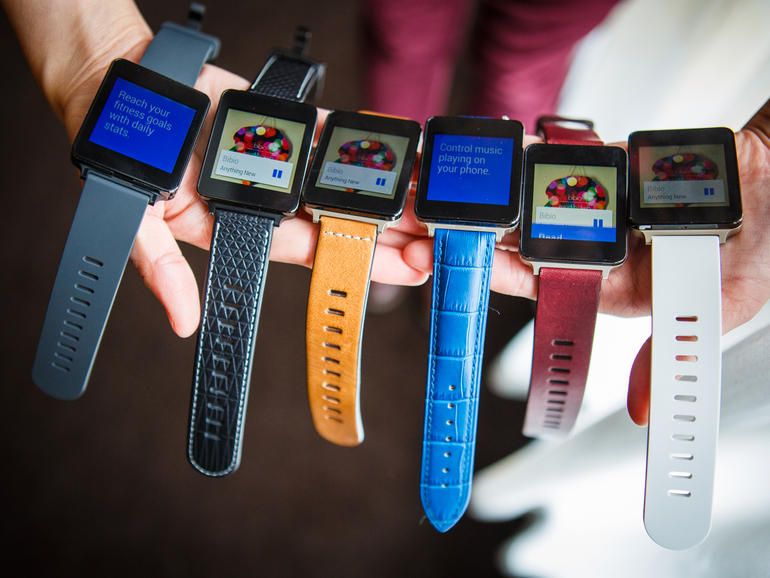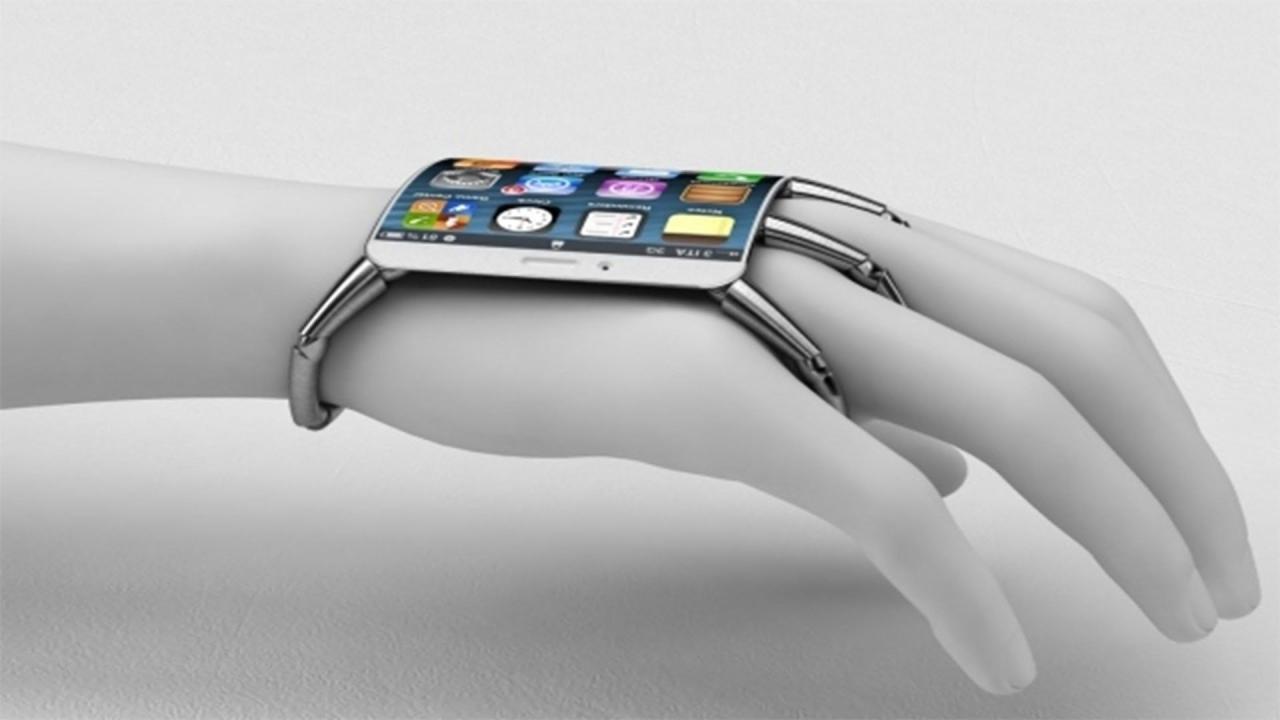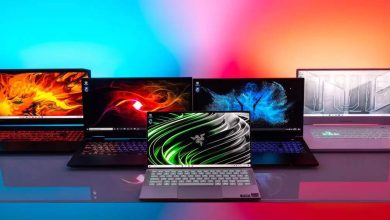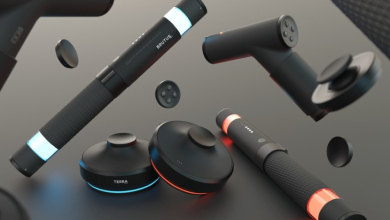Trending Gadgets Enhance Connectivity and Mobility

In today’s hyper-connected world, technological innovations are driving a revolution in the way we communicate, work, and live. Trending gadgets are at the forefront of this transformation, enhancing both connectivity and mobility while reshaping our daily routines. From smart wearables to cutting-edge IoT devices, these tools empower individuals and businesses alike to stay connected, efficient, and agile. This article provides an in-depth exploration of trending gadgets, their evolution, and how they improve connectivity and mobility in various aspects of life. By examining their impact on communication, productivity, and lifestyle, we can better understand the future trajectory of technological advancements and their role in a digitally interconnected society.
Connectivity and Mobility in the Digital Age
The rapid advancement of digital technologies has redefined how we perceive connectivity and mobility. Today, connectivity goes far beyond simple communication—it encompasses the ability to access information, collaborate with others remotely, and manage daily activities seamlessly. Mobility, on the other hand, refers to the freedom to access these resources anytime, anywhere. The advent of trending gadgets has blurred the lines between work and personal life, empowering individuals to remain engaged, productive, and connected regardless of their location.
Modern gadgets provide a bridge between the physical and digital worlds. They integrate multiple functions into single devices, making it easier to navigate a complex web of communication channels, applications, and data streams. This shift has created an environment where flexibility is key, and technological empowerment is essential for success in both personal and professional realms.
The Evolution of Gadgets: A New Era
The history of gadgets reflects a remarkable journey of innovation and adaptation. Early technological devices served basic functions, but over the years, advancements in materials, processing power, and connectivity have given birth to smart, multifunctional devices that significantly enhance our lifestyles. The evolution can be summarized as follows:
A. From Analog to Digital:
- Early communication devices were primarily analog, with limited capabilities.
- The transition to digital technologies paved the way for more sophisticated functionalities.
B. The Rise of Mobile Devices:
- The introduction of mobile phones revolutionized personal communication.
- Smartphones integrated computing, photography, and internet connectivity into a single portable device.
C. Emergence of Wearable Technology:
- Wearable gadgets, such as smartwatches and fitness trackers, have evolved to monitor health, deliver notifications, and support on-the-go connectivity.
- These devices are now integral to personal wellness and productivity.
D. Advent of the Internet of Things (IoT):
- IoT has enabled the interconnection of various devices, from home appliances to industrial machines.
- This networked ecosystem promotes efficiency, automation, and data-driven decision-making.
E. Integration of AI and Machine Learning:
- Modern gadgets leverage AI and machine learning to offer personalized experiences, predictive analytics, and enhanced security.
- These technologies facilitate smarter operations and proactive problem-solving.
Key Categories of Trending Gadgets
Trending gadgets encompass a wide array of devices that cater to different needs. Each category offers unique functionalities designed to enhance connectivity and mobility.
A. Smartphones and Mobile Devices
Smartphones have become indispensable in modern society. These devices do much more than just make calls—they serve as hubs for social interaction, productivity, and entertainment. Their multifunctional nature supports seamless communication, video conferencing, and mobile computing, making them a critical component of the digital age.
- Features:
A. High-resolution cameras for capturing moments on the go.
B. Fast processors enabling smooth multitasking.
C. Integration with various apps to manage work and personal life.
D. 5G connectivity for faster data speeds and reduced latency.
B. Wearable Technology
Wearable technology has rapidly gained popularity as a tool for monitoring health, fitness, and even professional productivity. Smartwatches, fitness trackers, and even smart glasses offer a range of functionalities that keep users informed and connected without needing to constantly check their phones.
- Key Benefits:
A. Continuous health monitoring, including heart rate and sleep patterns.
B. Instant notifications and reminders that improve time management.
C. Integration with mobile devices for seamless connectivity.
D. Enhanced safety features like fall detection and emergency alerts.
C. Laptops, Tablets, and Hybrid Devices
Mobility and productivity converge in devices like laptops and tablets. With advancements in design and functionality, these devices have evolved into powerful tools that facilitate remote work, creative projects, and on-the-go connectivity.
- Advantages:
A. Lightweight and portable designs for work anywhere.
B. High-performance hardware supporting complex tasks.
C. Versatile interfaces combining touch and traditional inputs.
D. Long battery life that ensures productivity during travel.
D. IoT Devices and Smart Home Gadgets
The Internet of Things (IoT) has introduced an era where everyday objects are connected to the internet, transforming them into smart devices. These gadgets create a cohesive ecosystem that enhances convenience, security, and efficiency in both residential and commercial settings.
- Examples:
A. Smart thermostats that optimize energy consumption.
B. Security cameras and smart locks ensuring home safety.
C. Voice-activated assistants that manage daily tasks.
D. Connected appliances that streamline household chores.
E. Portable Power Solutions
In a world that demands constant connectivity, portable power solutions such as power banks and solar chargers are critical. They ensure that our devices remain powered, even when traditional outlets are unavailable, supporting uninterrupted connectivity and mobility.
- Key Features:
A. High capacity to charge multiple devices simultaneously.
B. Compact and lightweight designs for ease of transport.
C. Solar charging capabilities for sustainable energy solutions.
D. Fast charging technology that minimizes downtime.
F. Emerging Technologies: 5G, AR/VR Devices
Emerging technologies such as 5G, augmented reality (AR), and virtual reality (VR) are set to redefine connectivity. These gadgets offer immersive experiences and unprecedented speeds, transforming both personal entertainment and professional applications.
- Innovative Aspects:
A. Ultra-fast data transfer with 5G networks enabling real-time applications.
B. AR devices that overlay digital information onto the real world.
C. VR headsets offering immersive virtual experiences for training and entertainment.
D. Hybrid solutions that integrate multiple emerging technologies for comprehensive connectivity.
Impact on Communication and Collaboration
Trending gadgets have transformed the way we communicate and collaborate, bridging geographical divides and fostering a more interconnected world. This transformation is especially evident in professional environments where remote work and virtual teams are becoming the norm.
A. Enhanced Communication Channels
Modern gadgets facilitate instantaneous communication across various platforms. Video conferencing, instant messaging, and collaborative applications allow teams to communicate seamlessly, regardless of their physical location.
- Benefits:
A. Real-time interaction fosters better decision-making.
B. Visual communication through video calls adds a personal touch.
C. Integration of communication tools with calendars and scheduling apps ensures timely meetings.
D. Enhanced data sharing capabilities promote collaborative problem-solving.
B. Improved Team Collaboration
Collaboration tools embedded in trending gadgets enable teams to work together more effectively. Features such as shared workspaces, document collaboration, and project management applications streamline workflows and reduce communication bottlenecks.
- Key Advantages:
A. Centralized platforms for task management and progress tracking.
B. Real-time document editing minimizes version control issues.
C. Seamless integration with cloud services for secure file sharing.
D. Automated reminders and notifications keep teams aligned with project deadlines.
C. Remote Work Revolution
The shift toward remote work has been accelerated by the availability of sophisticated gadgets that support connectivity and collaboration. Employees can now work from virtually anywhere, leveraging high-speed internet and cloud-based tools to maintain productivity.
- Impact on Businesses:
A. Increased flexibility in work arrangements leads to improved work-life balance.
B. Cost savings on physical infrastructure and office spaces.
C. Access to a global talent pool enhances diversity and innovation.
D. Business continuity is maintained even during disruptions, such as natural disasters or pandemics.
Enhancing Lifestyle and Personal Productivity
Beyond professional applications, trending gadgets have a profound impact on personal lifestyles and productivity. They integrate seamlessly into everyday life, providing convenience, efficiency, and entertainment.
A. Health and Fitness Monitoring
Wearable technology and smart devices have revolutionized the way we monitor our health. Fitness trackers and smartwatches offer detailed insights into physical activity, sleep quality, and overall well-being.
- Benefits:
A. Continuous monitoring helps in maintaining a healthy lifestyle.
B. Personalized data and feedback encourage active living.
C. Integration with mobile apps allows for comprehensive health tracking.
D. Real-time alerts can prompt timely medical attention when needed.
B. Entertainment and Leisure
Trending gadgets also enhance our leisure time by providing a range of entertainment options. Streaming devices, smart TVs, and gaming consoles have transformed how we consume media and engage in recreational activities.
- Entertainment Features:
A. Access to a wide array of streaming services and content libraries.
B. High-definition displays and immersive audio experiences.
C. Integration with social media for sharing and community engagement.
D. Portability ensures entertainment is always at hand.
C. Personal Organization and Productivity
In today’s fast-paced world, staying organized is crucial. Digital planners, smart calendars, and productivity apps integrated into modern gadgets help individuals manage their time effectively.
- Key Features:
A. Synchronization across devices for seamless scheduling.
B. Automated reminders and notifications to keep tasks on track.
C. Customizable interfaces tailored to personal needs.
D. Integration with email and communication platforms for efficiency.
Future Trends in Connectivity Gadgets
The landscape of trending gadgets is constantly evolving, with new innovations on the horizon that promise to further enhance connectivity and mobility. Looking ahead, several emerging trends are set to reshape our digital ecosystem.
A. Integration of Artificial Intelligence
Artificial Intelligence (AI) will play an increasingly critical role in future gadgets. AI-powered devices will offer personalized experiences, predictive maintenance, and automated functions that simplify daily tasks.
- Potential Developments:
A. Voice-activated assistants with enhanced contextual understanding.
B. Smart gadgets that learn user preferences over time.
C. Predictive analytics for optimized device performance.
D. Integration of AI in security systems for proactive threat detection.
B. Expansion of 5G and Beyond
The rollout of 5G technology is only the beginning. Future networks will offer even faster connectivity, reduced latency, and greater bandwidth, enabling a new wave of innovations in mobile technology.
- Implications:
A. Enhanced streaming and real-time gaming experiences.
B. Improved performance of IoT devices with instant connectivity.
C. Development of new applications that rely on high-speed data transfer.
D. Global connectivity that bridges digital divides in remote areas.
C. Augmented Reality (AR) and Virtual Reality (VR)
AR and VR technologies are set to become mainstream, offering immersive experiences that blend the digital and physical worlds. These gadgets will revolutionize industries such as education, healthcare, and entertainment.
- Future Prospects:
A. Virtual workspaces that enable realistic remote collaboration.
B. AR-enhanced navigation tools that overlay digital information on the real world.
C. VR training modules that simulate complex scenarios for skill development.
D. Integration with social platforms to create immersive social experiences.
D. Sustainable and Eco-Friendly Gadgets
As environmental concerns grow, there is a rising demand for sustainable technology. Future gadgets will likely incorporate eco-friendly materials, energy-efficient designs, and enhanced recyclability.
- Sustainability Focus:
A. Use of biodegradable materials in device construction.
B. Energy-saving features that reduce power consumption.
C. Innovations in battery technology for longer life and lower environmental impact.
D. Programs for recycling and repurposing outdated gadgets.
Challenges and Considerations
Despite the impressive advancements, the rapid pace of technological innovation presents several challenges that must be addressed to fully realize the benefits of trending gadgets.
A. Security and Privacy Concerns
With increased connectivity comes the heightened risk of cyber threats. Devices that collect and transmit data are vulnerable to hacking, data breaches, and other security risks.
- Mitigation Strategies:
A. Robust encryption protocols to safeguard user data.
B. Regular software updates to patch security vulnerabilities.
C. User education on best practices for device security.
D. Implementation of multi-factor authentication for sensitive systems.
B. Managing Digital Overload
The abundance of connected devices can lead to information overload and digital fatigue. Balancing connectivity with mental well-being is a critical consideration.
- Approaches:
A. Setting boundaries for screen time and device usage.
B. Utilizing productivity apps that minimize distractions.
C. Regular digital detoxes to recharge mentally.
D. Prioritizing quality over quantity in digital interactions.
C. Environmental Impact and E-Waste
The rapid obsolescence of gadgets contributes significantly to electronic waste. Sustainable practices and responsible consumption are essential to mitigate environmental damage.
- Sustainable Practices:
A. Encouraging manufacturers to adopt green design principles.
B. Promoting device longevity through repair and upgrade options.
C. Implementing effective recycling programs for outdated technology.
D. Consumer education on the environmental impact of frequent device replacements.
Case Studies: Real-World Applications
The transformative power of trending gadgets is evident across diverse sectors. Here are some real-world examples that highlight their impact on connectivity and mobility:
A. Remote Healthcare Solutions
In the healthcare industry, wearable devices and smart gadgets have enabled remote monitoring of patient vitals, allowing doctors to track health data in real time. This has been especially beneficial in rural areas, where access to healthcare facilities is limited.
- Benefits:
A. Continuous monitoring leads to early detection of health issues.
B. Telemedicine platforms improve access to specialist care.
C. Real-time data sharing enhances diagnosis accuracy.
D. Reduced need for frequent hospital visits, saving time and costs.
B. Educational Technology Advancements
Educational institutions have embraced trending gadgets to create more interactive and engaging learning environments. From smart boards to AR-based learning tools, these devices facilitate a more connected and immersive educational experience.
- Impact:
A. Enhanced engagement through interactive content.
B. Real-time feedback and assessment tools improve learning outcomes.
C. Virtual classrooms enable global collaboration among students.
D. Access to a wealth of digital resources enriches the curriculum.
C. Corporate Digital Transformation
Businesses across various industries are leveraging cutting-edge gadgets to streamline operations, improve collaboration, and drive innovation. The adoption of mobile devices, cloud solutions, and IoT platforms has revolutionized corporate workflows.
- Key Outcomes:
A. Increased operational efficiency through automation.
B. Enhanced team collaboration via integrated communication platforms.
C. Data-driven decision making facilitated by real-time analytics.
D. Improved customer engagement through innovative digital interfaces.
The Role of Leadership in Embracing Technology
Successful integration of trending gadgets requires visionary leadership. Business leaders must foster a culture that embraces technological innovation while addressing associated challenges.
A. Encouraging a Digital-First Mindset
- Strategies:
A. Promote continuous learning and upskilling among employees.
B. Invest in training programs that focus on digital literacy.
C. Encourage experimentation with new tools and platforms.
D. Recognize and reward digital innovation within the organization.
B. Balancing Innovation with Security
- Key Considerations:
A. Implement robust cybersecurity policies alongside new technologies.
B. Ensure transparency in data handling practices.
C. Regularly review and update security protocols to match evolving threats.
D. Collaborate with cybersecurity experts to safeguard digital assets.
C. Driving Organizational Change
- Best Practices:
A. Develop a clear roadmap for digital transformation.
B. Communicate the vision and benefits of new technologies to all stakeholders.
C. Monitor progress through measurable performance indicators.
D. Adapt strategies based on feedback and technological advancements.
Conclusion
Trending gadgets are not merely tools; they are enablers of a connected, mobile, and efficient future. By transforming the way we communicate, work, and manage our daily lives, these devices have redefined the boundaries of connectivity and mobility. From smartphones and wearables to IoT devices and advanced communication platforms, each innovation plays a pivotal role in creating a digitally integrated ecosystem.
As we navigate an era marked by rapid technological change, embracing these gadgets is not just a matter of convenience but a strategic imperative. Organizations and individuals who leverage these tools effectively are better positioned to thrive in a competitive landscape, enjoying enhanced productivity, improved quality of life, and a sustainable, forward-thinking approach to technology.
Looking ahead, the continued evolution of technology promises even greater advancements. With the integration of AI, 5G, AR/VR, and sustainable practices, the future of connectivity and mobility is bright and full of opportunities. It is imperative for businesses, educators, healthcare providers, and governments to invest in these technologies, ensuring that the benefits of a connected world are accessible to all.
The journey toward a more connected and mobile future is underway, and the role of trending gadgets is central to this transformation. By staying informed, adapting to new technologies, and addressing the challenges head-on, we can build a robust digital ecosystem that supports innovation, fosters collaboration, and enhances the quality of life for everyone.





